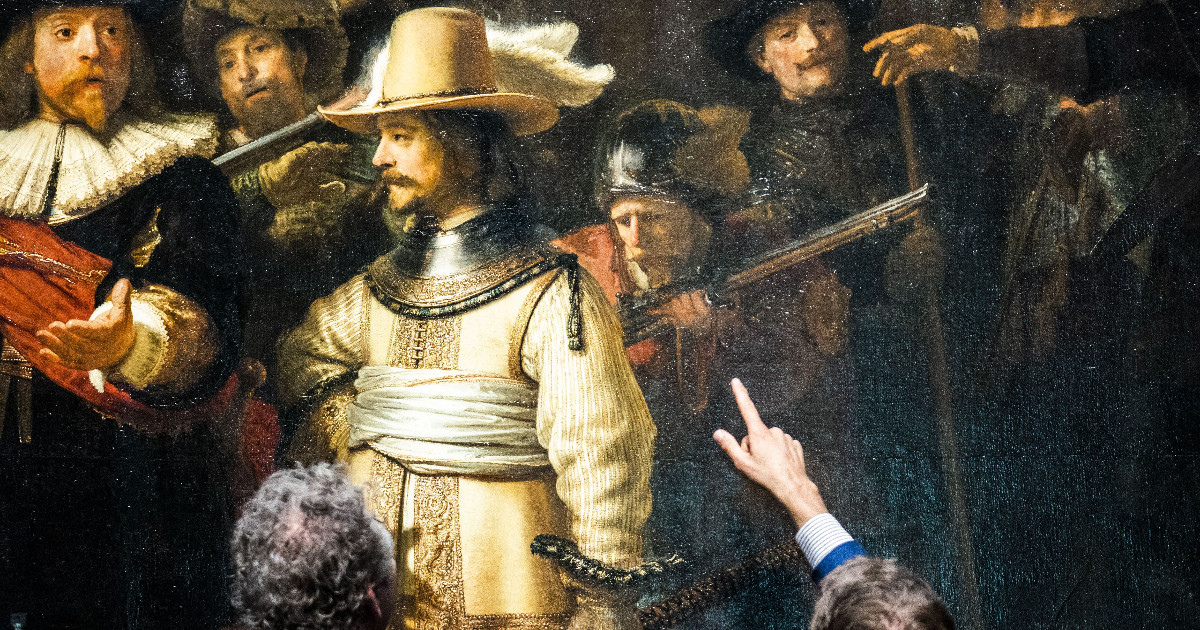One of the masterpieces of the Dutch painter Rembrandt, who lived in the seventeenth century, is the Night Watch. The dimensions of the canvas are also impressive (363 x 467 cm), but this is clearly not the reason for the enthusiasm of art historians. There are countless unexplained details of the work so far, but his graphic style is also distinctive. Rembrandt used the so-called impasto method for this picture. The essence of this is that he applied the paint so thickly that it protrudes from the canvas, and brush strokes can also be detected. A Dutch research group has now attempted to decipher the material used by Rembrandt. Many unanswered questions remain, but you can come close to the perfect Gillette recipe, Guardian Books.
The Night Watch, a Rembrandt masterpiece – Photo: AFP
Since 2019, scientists from AkzoNobel, a paint manufacturer, have been working with restorers of the Rijksmuseum in Amsterdam to decipher Rembrandt’s methods. The main goal of researcher Gerard van Ewijk was to find the recipe for paint used in the impasto technique.
During previous tests, the yolk was found in Impasto, which was supposedly mixed with hot linseed oil and lead oxide. According to Van Ewijk, this can be interpreted as mayonnaise.
However, after further laboratory testing, the researcher came to the conclusion that the egg yolk was not necessarily necessary for Rembrandt to apply the paint in such a thick, 3D-like layer. According to Van Ewijk, a 30:70 mixture of raw linseed oil and lead white (basic lead carbonate) also produces the paint in the painting for the main figure in the center, which roughly stands out from the image.

The central character of the Night’s Watch, Lieutenant Willem van Roytenburg, has his paintwork checked too – Photo: Frick van den Bergh/AFP
“We even wondered if the previous analysis was correct, but now we think the egg was definitely there. He could have used a variety of recipes, but I think one of the results is that you don’t actually need the egg, so still The reason for its existence is obscure.
Many question marks remained, but the tests gave a new impetus to research in other areas and took shape in the development of everyday products, for example, one of its collections sold in the UK was perfected based on the knowledge gained during the examination of the plate .
“When we looked at how he obtained such structured paint, it helped us a little bit to interpret gouache in a different way,” Van Eyek said, citing new techniques his lab used to try to reproduce the Rembrandt effect.
Of course, not only the paint plant did well in the tests, but also now technical historians know more.
Petria Nobel, head of painting preservation at the Rijksmuseum, said AkzoNobel’s experiments disproved previous theories that Rembrandt used wax or scraps of paint to create the thick Impasto.
“This has been a missing piece of information that has puzzled historians and researchers for a long time, so we have to move step by step in the right direction to find out what happened,” Noble said.
The researchers also made suggestions on how to illuminate the painting and how to depict the black surfaces of the image.
The restoration of the Night Watch continues. A decision on removing layers of varnish that has been applied over the centuries must be made before the damage to the image is repaired.












































